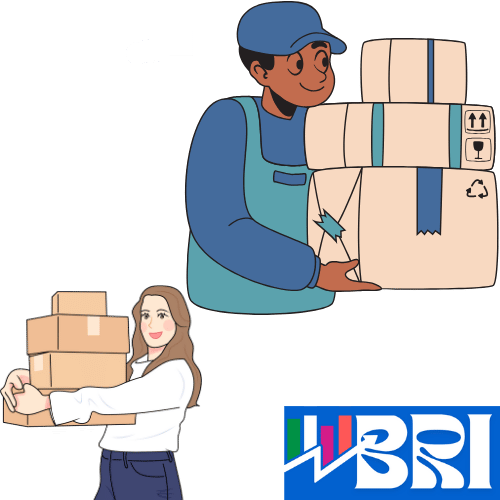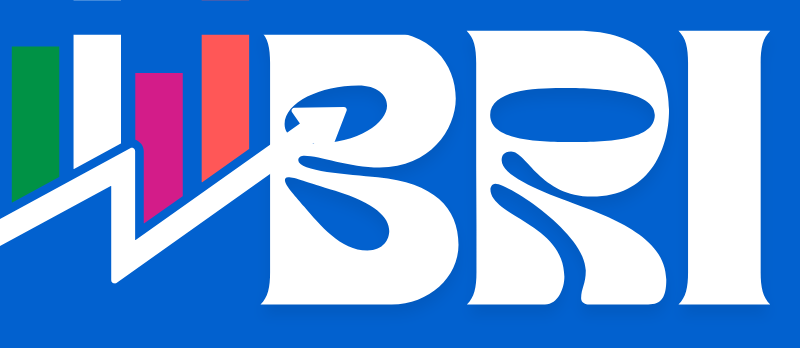
Pharmaceutical Glass Packaging Market Size
As per the Pharmaceutical Glass Packaging Market size analysis conducted by the CMI Team, the global pharmaceutical glass packaging Market is expected to record a CAGR of 7.87% from 2025 to 2034. In 2025, the market size is projected to reach a valuation of USD 24.87 Billion. By 2034, the valuation is anticipated to reach USD 49.20 Billion.
Pharmaceutical Glass Packaging Market Overview
As per industry experts at CMI, the pharmaceutical glass packaging market is undergoing immense growth driven by the increasing demand for secure, trustworthy, and sustainable drug packaging in the pharma industry. The inherent properties of glass, such as chemical inertness, impermeability, and recyclability, make glass a most ideal material for preserving the integrity of sensitive drug formulations such as biologics and vaccines.
Strong regulatory demands for quality packaging to ensure patient safety and drug effectiveness fuel the market. Improved glass manufacturing, such as Type I borosilicate glass and new coating technologies, enhances strength and reduces the risk of contamination. The global trend towards environmental sustainability is also compelling pharma firms towards the use of glass packaging compared to plastic packaging, in accordance with green practices and consumer preference.
Pharmaceutical Glass Packaging Market Growth Factors and Dynamics
- Rising Demand for Injectable Drugs: The global increase in the use of injectables, including vaccines, insulin, and biologics, is significantly driving demand for the pharma glass pack market. Injectables need containers that can be sterilized and won’t react with chemicals, which helps keep the drugs stable and safe for patients. The widespread distribution of COVID-19 vaccines has built an unwritten demand for vials of glass. Well over 13 billion doses of vaccines were deployed globally up to February 2023, as reported by the World Health Organization, each of which required glass packaging that could be relied upon. The International Diabetes Federation further reported that an estimated 537 million adults suffered from diabetes in 2021, a figure predicted to increase to 643 million by 2030, again increasing the demand for insulin that is predominantly dispensed in glass syringes. This increasing need for injectable drugs stresses the critical role that glass packaging plays in delivering drug efficacy and safety.
- Stringent Regulatory Standards: Regulatory agencies such as the U.S. Food and Drug Administration (FDA) and the European Medicines Agency (EMA) impose strict standards for pharmaceutical packaging to ensure drug safety and efficacy. Glass packaging, especially Type I borosilicate glass, is preferred due to its excellent chemical resistance and capacity to preserve drug stability. Such standards have encouraged the application of high-quality glass packaging, especially to sensitive medications like vaccines and biologics. Compliance with such standards ensures product integrity, reduces contaminant risk, and enhances patient safety, thus ensuring the application of glass packs in the pharmaceutical industry.
- Expansion of Biopharmaceuticals: The rapid growth of biopharmaceuticals like monoclonal antibodies, vaccines, and gene therapies is one of the key drivers of growth for the pharmaceutical glass packaging market. Due to their extreme sensitivity to the environment, these advanced biologic medicines require packaging in materials that offer superior barrier properties and chemical inertness. Glass packaging, in the form of borosilicate glass, is the required choice to maintain the stability and effectiveness of these medicines. Over 1,200 biologic medicines were under clinical trials in the United States as of January 2024, according to the Biotechnology Innovation Organization, with a robust pipeline that will demand customized glass packaging solutions. Such growth underscores the significance of glass packaging to facilitate the effective and safe delivery of innovative biopharmaceutical therapies.
- Increase in Geriatric Population: The worldwide aging population is leading to an increase in chronic illnesses, which require long-term drug regimens. Older patients typically require drugs that are sensitive to environmental conditions; therefore, glass packaging is the most suitable option because it is inert and provides protection. For example, the United Nations estimates that by 2050, one in every six individuals worldwide will be aged over 65 years, compared to one in eleven in 2019. This population change will drive demand for pharmaceuticals, especially injectables and biologics, which are highly dependent on glass packaging to maintain drug stability and patient safety. Therefore, the drug glass packaging market will develop in line with the aging world population, fulfilling the specialized requirements of this group.
Report Scope
| Feature of the Report | Details |
| Market Size in 2025 | USD 24.87 Billion |
| Projected Market Size in 2034 | USD 49.20 Billion |
| Market Size in 2024 | USD 23.36 Billion |
| CAGR Growth Rate | 7.87% CAGR |
| Base Year | 2024 |
| Forecast Period | 2025-2034 |
| Key Segment | By Material, Product, Drug Type and Region |
| Report Coverage | Revenue Estimation and Forecast, Company Profile, Competitive Landscape, Growth Factors and Recent Trends |
| Regional Scope | North America, Europe, Asia Pacific, Middle East & Africa, and South & Central America |
| Buying Options | Request tailored purchasing options to fulfil your requirements for research. |
Pharmaceutical Glass Packaging Market SWOT Analysis
- Strengths: Pharmaceutical glass packaging is very resistant to chemicals, impermeable, and sterile, and hence considered best for preserving drug formulations sensitive to those conditions, such as vaccines and biologics. Type I borosilicate glass is especially preferred due to its excellent resistance to thermal shock and chemical interaction, along with the assurance of shelf life and efficacy of drugs. Industry bodies like the FDA and EMA insist on stringent quality requirements, which glass complies with very comfortably, thus enjoying a competitive edge. In addition, glass is 100% recyclable, which is also in line with the rising focus on sustainability in the healthcare industry globally. All these positives are factors driving the rising use of glass versus other packaging materials such as plastic or aluminum in the pharmaceutical world.
- Weaknesses: Despite its advantages, glass packaging has inherent weaknesses of brittleness and heaviness, which have the potential to increase transport expenses and fragility during handling and distribution. There are particular challenges in developing economy supply chains or emergency stocks. Additionally, manufacturing high-quality drug-grade glass involves a significant amount of capital investment and energy input, making production costs higher. There are also limited possibilities for customization, which restricts the flexibility of design. Such limitations can reduce competitiveness, particularly where markets are price-sensitive as well as logistics efficiency, and can encourage substitution to other packaging materials in areas.
- Opportunities: There is a growing need for high-end, sterile, and eco-friendly packaging forms as injectable drugs and biologics are in greater demand. This trend presents opportunities for pharmaceutical glass packaging, particularly in emerging economies investing in healthcare infrastructure. Advances in coating technologies and intelligent packaging (e.g., RFID, tamper-evident seals) are creating new opportunities for glass packaging manufacturers. Moreover, greater global sustainability targets and more stringent plastic reduction legislation offer long-term prospects as pharmaceutical businesses look to recyclable and non-reactive material alternatives. Joint initiatives among packaging companies and pharmaceutical businesses in creating new forms such as lightweight vials and modular ampoules can also propel market take-up and competitive benefit.
- Threats: Several competitions from other materials like high-grade polymers and plastics, which are lighter and more resistant to impact, threaten the glass packaging industry severely. Disruptions to supply chains and raw material shortages, particularly in countries with limited supplies of silica or energy constraints, can affect the scalability and profitability of production. Regulations and carbon taxes can further test the green credentials of glass manufacturing by exposing its rising energy costs and carbon footprint. New technologies in intelligent or biodegradable polymer packaging can also divert pharmaceutical investment from glass. Last but not least, any changes in forms of drug delivery, like a switch to oral dissolvable films or patches, can reduce dependence on traditional glass packaging.
List of the prominent players in the Pharmaceutical Glass Packaging Market:
- Corning Incorporated
- Nipro Corporation
- SGD S.A.
- Stoelzle Oberglas GmbH
- Bormioli Pharma S.p.A.
- West Pharmaceutical Services Inc.
- Schott AG
- Gerresheimer AG
- Shandong Medicinal Glass Co. Ltd.
- Beatson Clark
- Ardagh Group S.A
- Arab Pharmaceutical Glass Co.
- Piramal Enterprises Ltd.
- Şişecam Group
- Owens-Illinois Inc.
- DWK Life sciences
- Others
The Pharmaceutical Glass Packaging Market is segmented as follows:
By Material
- Type I
- Type II
- Type III
By Product
- Vials
- Bottles
- Cartridges & Syringes
- Ampoules
By Drug Type
- Generic
- Branded
- Biologic
Regional Coverage:
North America
- U.S.
- Canada
- Mexico
- Rest of North America
Europe
- Germany
- France
- U.K.
- Russia
- Italy
- Spain
- Netherlands
- Rest of Europe
Asia Pacific
- China
- Japan
- India
- New Zealand
- Australia
- South Korea
- Taiwan
- Rest of Asia Pacific
The Middle East & Africa
- Saudi Arabia
- UAE
- Egypt
- Kuwait
- South Africa
- Rest of the Middle East & Africa
Latin America
- Brazil
- Argentina
- Rest of Latin America
[embedsocial_reviews id=”d4ae80cffae3d938f997111953699a733c8e6f99″]
